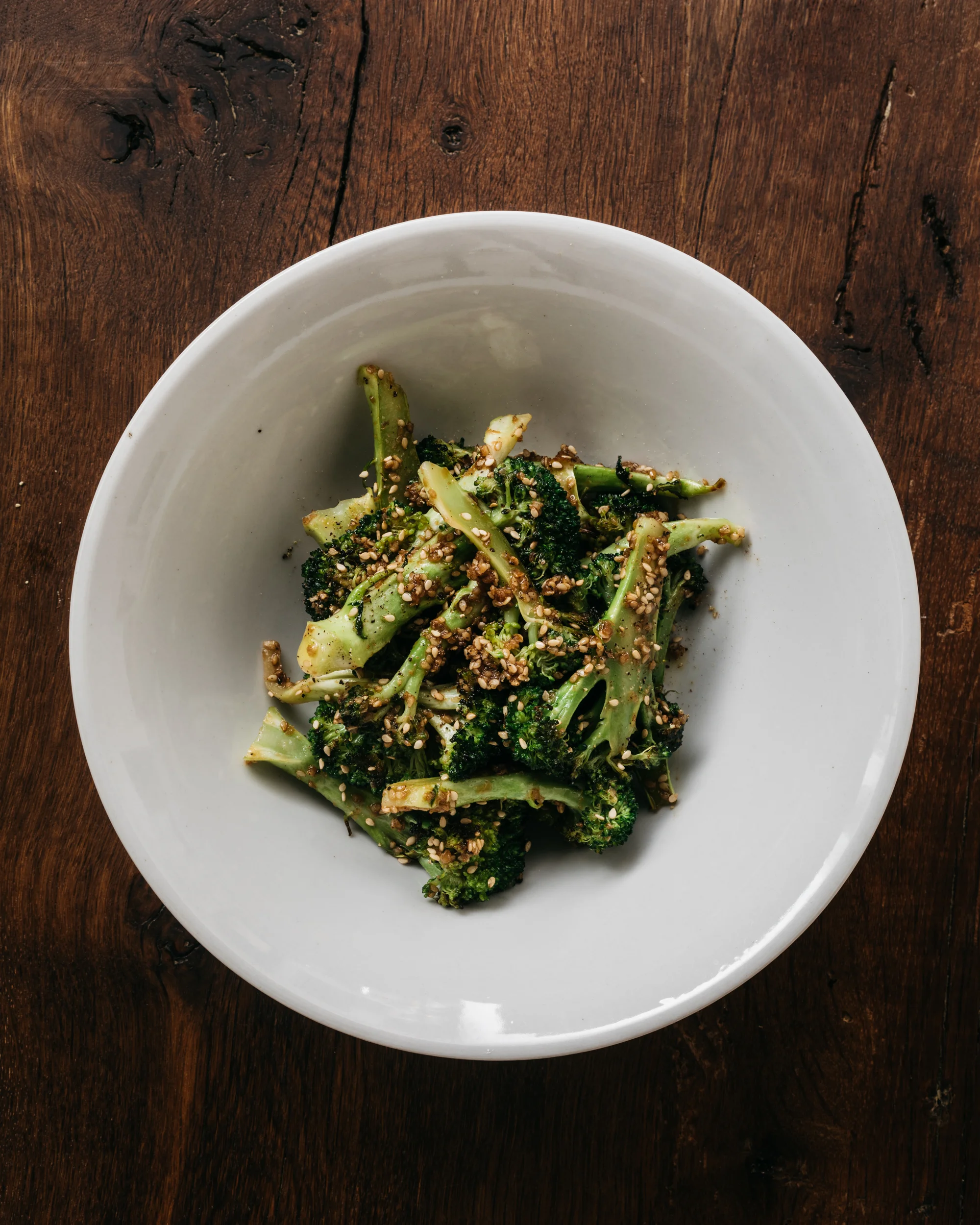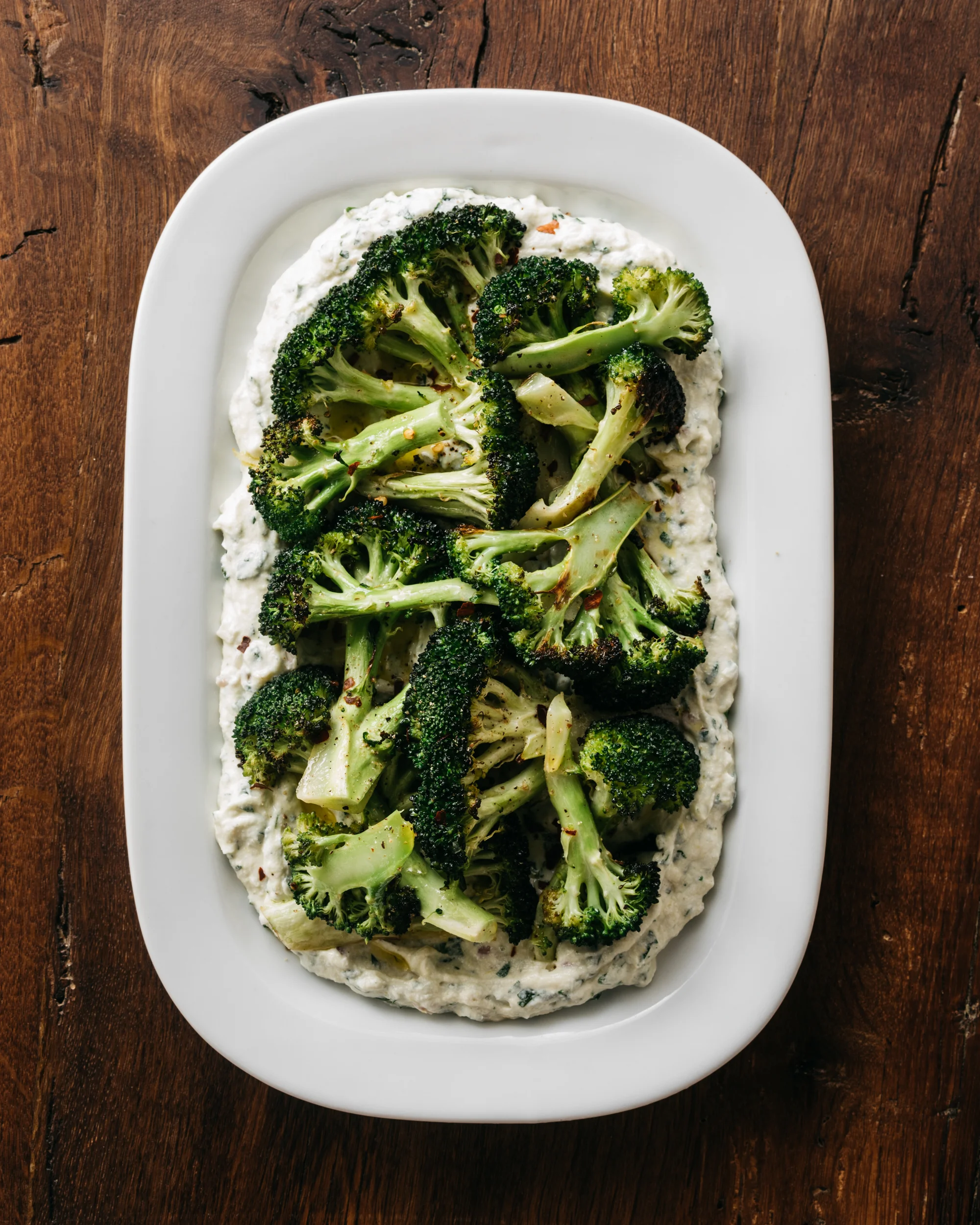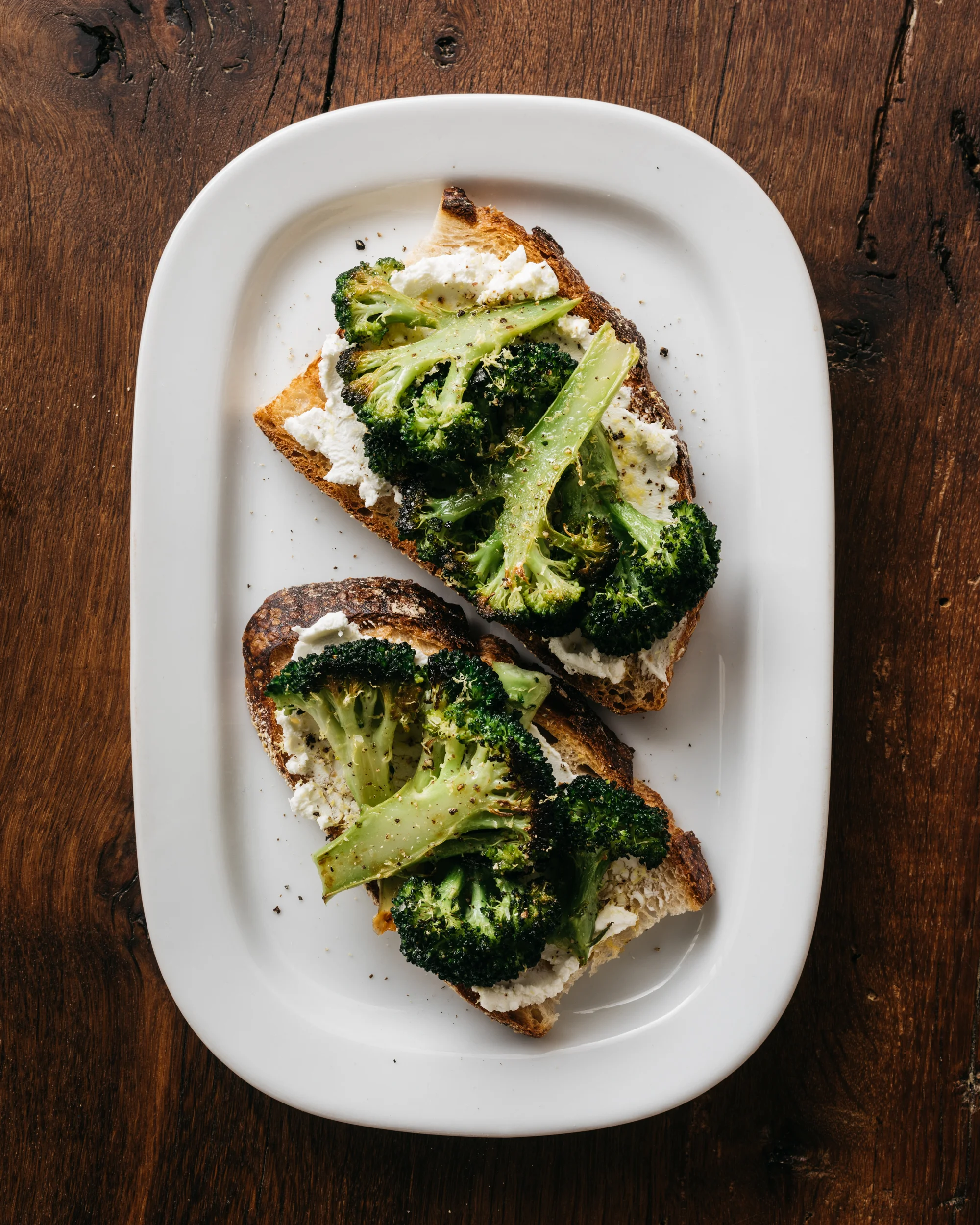Unabashed Broccoli Boosterism
Photos by Michael Piazza
As sure as Brussels sprouts, kale and cauliflower are the Brassica clan’s highest-profile celebrities, their brother broccoli is the underdog of the family.
Over the last few years we’ve been bombarded by kale in every possible form, from chips to smoothies to salad. Brussels sprouts, with their adorable diminutive profile and nutty sweetness when roasted, have soared in prominence, no longer the pariah of the Thanksgiving table. Cauliflower? Its handsome, creamy white florets and impressive construction have always made it a looker— now it even masquerades as rice and pizza crust for the carb-averse.
So, what of broccoli? Years of missteps in its preparation have undoubtedly tarnished its reputation. As if tough, raw chunks passed off as proper crudités, and odiferous florets boiled to the brink of disaster by our ancestors weren’t enough, broccoli even suffered a Presidential rebuke in 1990 from the late President Bush the elder.
Well, onwards and upwards, I say. It’s time to let broccoli bygones be broccoli bygones, and reconsider it based on its many merits.
Let’s start with heritage.
Quick: Name all the Mediterranean vegetables you can think of in 10 seconds. Tomatoes, eggplant, zucchini, yellow squash, sweet peppers, artichokes, fava beans, fennel, radicchio, onions, truffles… Time’s up. But wait, you forgot to mention broccoli. That’s right, it’s Italian, and what food person doesn’t love all things Italian? Some food historians trace broccoli as far back as the Etruscans, who populated the areas now known as Tuscany and Umbria long before the Roman empire, and there’s even mention of a vegetable that could have been broccoli in Apicius, a collection of Roman recipes compiled in the 1st century.
The English word broccoli derives from the Italian broccolo, meaning “the flowering crest of a cabbage,” and the Latin brachium, meaning arm, branch or shoot. Sticking with the broccolo bent, broccoli is a cultivar of a wild cabbage from the Mediterranean coast. After this cabbage was domesticated thousands of years ago, its genetics were enlisted to develop the other Brassicas we know as broccoli, cauliflower, cabbage, kale and kohlrabi, among others.
Ancient though it may be, broccoli didn’t become popular in America until the wave of southern Italian immigration in the early 20th century. Two of those immigrants, the D’Arrigo brothers Stephano and Andrea of Sicily, farmed commercially in California, where, in 1922 they experimented with a small planting of broccoli. Crates from that planting were iced and shipped—as expediently as 1922 transportation allowed—here to Boston and the burgeoning Italian enclave in the North End, helping cement broccoli’s American popularity and viability as a commercial crop.
(That shipment is but one of broccoli’s local connections. Another is a variety called Waltham 29, popular with home gardeners, which was bred by the UMass Waltham Field Station around 1950.)
Though some may beg to differ, if you ask me, broccoli’s intense flavor and its affinity for other strong, assertive flavors is another reason to love it. The variety that most of us recognize in supermarkets simply as ‘broccoli’ (and the type I used to develop the accompanying recipes) is Calabrese, from Calabria in the south of Italy. That may help explain broccoli’s natural kinship with other common—but potent—flavors of that region, such as olive oil, garlic, red pepper flakes, lemon, anchovies, olives and capers. In fact, each of those ingredients is present and accounted for somewhere in the recipes here, along with goat cheese and sesame, neither one a shrinking violet flavor-wise. Don’t let that list daunt you, though, because broccoli is every bit as delicious seasoned simply with extra-virgin olive oil, salt and pepper. More than once as I developed these recipes I decimated piles of “blasted broccoli” au naturel before even adding the sauce or garnish.
Any discussion of broccoli that doesn’t also extoll its healthfulness would be remiss. The entire Brassica tribe is known to pack an impressive nutritional punch, and broccoli certainly does its family proud in this regard. Calories are negligible and soluble fiber and folate are plentiful. Vitamins A, C and K abound. There’s calcium, potassium, magnesium, riboflavin and iron. Broccoli sports antioxidants that help reduce inflammation, and also has a reputation as a foe to cancer, owing in part to glucosinolates, which help expel toxins.
Ubiquity is another broccoli boon. Of course broccoli from your own garden—or your favorite local farmer—is the most desirable option, but failing that you’d be hard-pressed to find a supermarket that doesn’t sell it. And to be honest, I find that supermarket broccoli almost always passes muster in terms of condition and freshness throughout the year, even though it’s a cool-weather crop and at its best from the late fall through the early spring.
If there’s one aspect of supermarket broccoli that’s irritating, though, it’s that often the stalks are removed and we’re left with only the crowns. The stalks taste great! In fact, to my palate (and those of many people I queried on the matter), the stalks taste even better than the florets—sweeter and more succulent. The only caveat is that the skin on the stalks is often thick and fibrous, but it’s easy to remove with either a sturdy vegetable peeler or a paring knife.
Now, the fun part—cooking. The cardinal rule? Thou shalt not boil broccoli. Instead, blast it. By blasting I mean roasting at very high heat on a pre-heated pan, to encourage deep browning, almost to the point of charring. Broccoli can take the heat, and will taste better for it.
For the blasting method that anchors these recipes, I leave the florets in fairly large pieces, about 2 inches, so they won’t overcook. You can remove the skin from the larger florets if you wish—I usually do if I have time. More important, though, is to cut through the florets so that as many as possible have a flat side to make contact with the hot pan, assisting browning and therefore flavor. Add one of the sauces or other accompaniments here, and show broccoli the love it deserves.
This story appeared in the Fall 2019 issue.
Recipes







